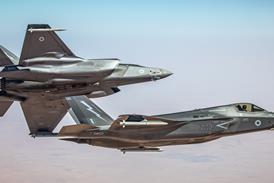Boeing has detailed efforts to reduce the cost of the F/A-18E/F Super Hornet, as it begins to promote the aircraft to potential export customers.
Pat Finnernan, Boeing vice-president and general manager Navy and Marine Corps programmes, says: "We have developed a disciplined programme that has taken a market price that's in the low $40 millions." This is critical to the success of the aircraft in the export market and the aim is to achieve the cuts by 2005.
Finnernan says that the current unit recurring flyaway price of the aircraft is $48 million, although Boeing says this figure includes a $10 million cost reduction anticipated from the 222 aircraft multi-year contract signed this year with the US Navy (Flight International, 26 April-2 May).
The manufacturer has cut production cycle times from over 40 months to 34 months and aims to reduce this to 24 months by the end of this year. The target is toachieve an 18-month cycle time by 2003.
The company has been negotiating agreements with suppliers on just-in-time delivery of parts. Savings are also being made through initiatives such as the introduction of the "wagon wheel" style of assembly line, where fuselage sections are arranged in a circle, facing a central supply area.
"The result is a more economical installation line that takes up less floor space and, for the employees, the travel distance for parts, tools, equipment and supplies is the same from all installation line positions," says Boeing.
Other goals include a 90% reduction in defective parts by 2003 and an increase in the frequency of inventory turnover from three to six times a year.
Finnernan says the company is prepared to offer export customers alternative powerplants or avionics systems - a policy adopted previously with the Rolls-Royce Spey- powered F-4K variant of the McDonnell Douglas F-4, sold to the UK in the 1960s.
It is understood that the Eurojet EJ200 turbofan is being considered as an alternative to the General Electric F414, to strengthen the F/A-18E/F's position in the UK competition for a future carrier-borne aircraft. Finnernan says other key target export markets include Australia, Brazil, Chile and the Netherlands.
Source: Flight International























